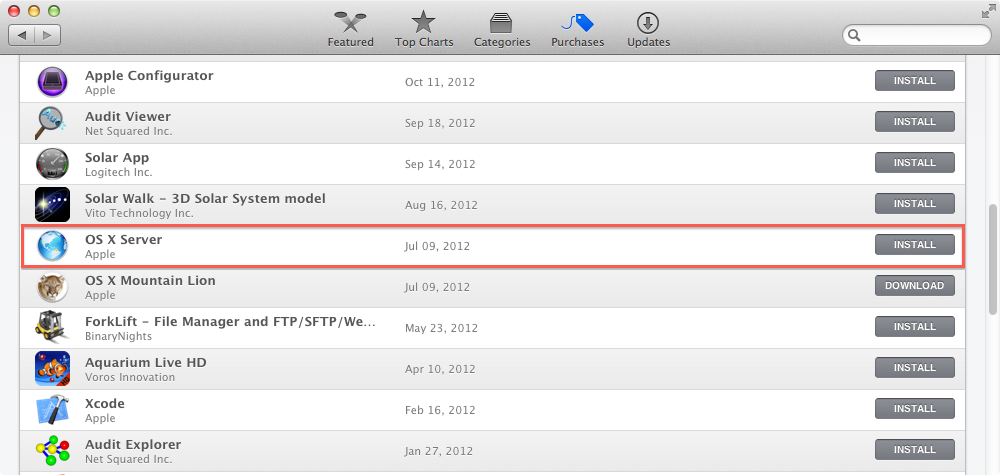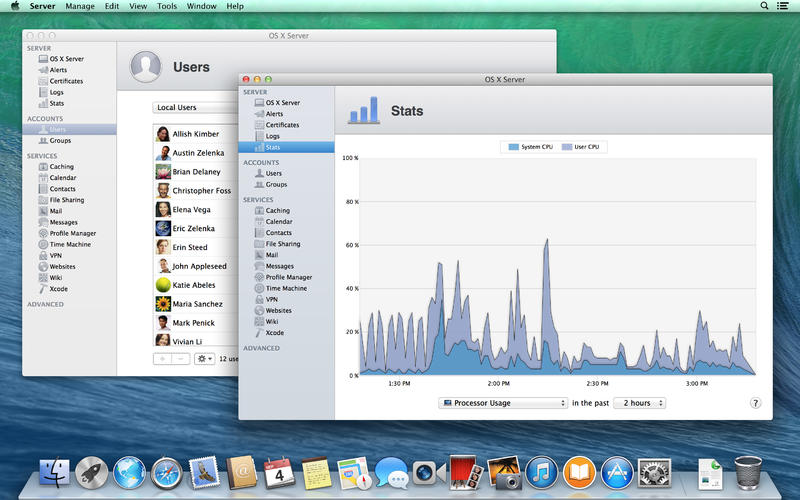
When you install OS X Server, you add a number of services and enhanced configuration programs to the existing OS X installation that give you far greater ability to provide network services and that change these services' capabilities. These server packages can be used to turn an OS X client into a rudimentary server of sorts, but by default both the types of included server options and your ability to configure them are limited, primarily to that which would be most useful to home users. There are also a number of hidden and unused server packages such as the FTP server that have been replaced with more secure or faster options, but which can be configured for use if needed.

OS X comes with several servers installed, including those for network services like screen sharing, printer sharing, and file sharing, and also those for local application support such as the window "server" that draws windows and interface elements on the screen. How should you wire the server to the modem-router? Ethernet to the router and computers Wi-Fi between them and to the server? (I mean, is there a hierarchy like all should go first through the server?) MacFixIt reader Pedro recently wrote in with questions that others interested in the server will undoubtedly have:, can you run OS X Server on an iMac running Mountain Lion? Do you end up with two machines: the server and the computer? Do you have to switch tasks (now the server, then the iMac)? Does the installation (and operation) of the server slow the iMac to any degree? Is it perhaps better to run the server on a physically different machine (like a Mac Mini)?

If you're wondering what it is for and what it will do to the system when installed, read on. In addition to the standard OS X installation that you purchase from the Mac App Store, you can use Apple's OS X Server package to convert your system into OS X Server.


 0 kommentar(er)
0 kommentar(er)
